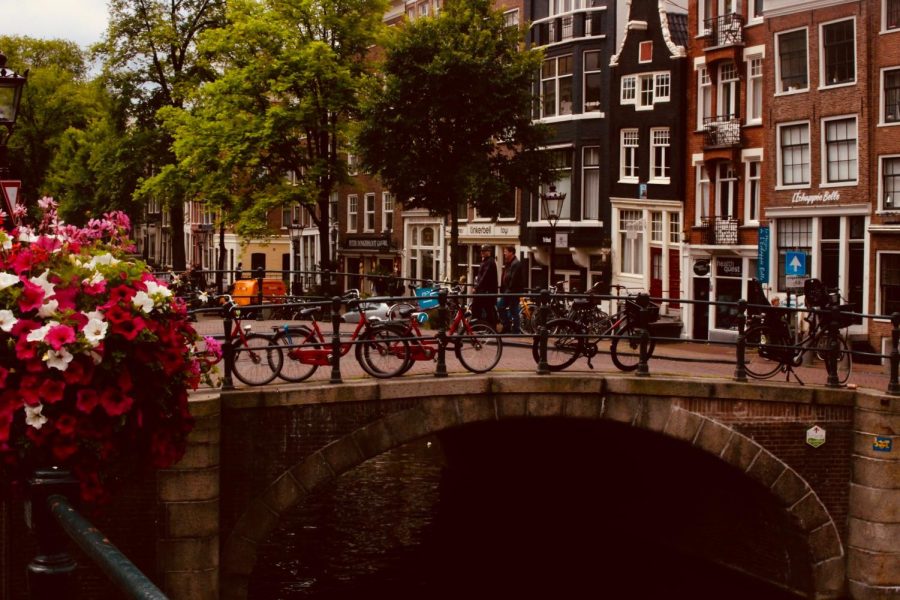Langley: Cities Need to Prioritize Pedestrians, Not Cars
April 12, 2023
A few weeks ago, I wrote about the issues that cars pose in the modern world. Carbon emissions, systemic inequality, and physical and mental health drawbacks, while terrible on their own, only scratch the surface of the awful problems that cars cause. It’s easier to identify these symptoms of our mismanagement than it is to imagine ways to fix them. Car-dependent urban Americans have an especially difficult time visualizing potential solutions. Despite this difficulty, many foreign and domestic cities have and continue to return to the pedestrian-centric roots of urban planning with great success.
To better our lives, economy and environment, we must abandon the woeful experiment of auto-centricity and create our cities to serve pedestrians, not cars.
Walking: Once the Norm, Now a Luxury
Before the invention of the automobile, we built all cities for pedestrians, and people walked daily to get where they needed to go. Consequently, cities were much denser. For example, the city center of Siena, Italy, built long before cars, houses around 30,000 inhabitants in under half a square mile. Comparatively, cars, especially in the western United States, force us to use land less sparingly. Texas Beltway 8, an interchange just outside of Houston, is approximately the same size as the city of Siena and houses no homes, businesses or amenities. Our infrastructure blatantly favors cars. While some may not take issue with this, the benefits of having walking or biking as the primary form of transportation far outweigh the convenience of cars.
As mentioned in my last piece, cars promote a sedentary lifestyle that often leads to adverse health conditions. Many of these issues, like obesity and deep-vein thrombosis, come from sitting for extended periods. Cars also pose dangers to public health in the form of emissions and accidents. However, these issues are far less common in cities with walkable infrastructure.
Alongside a reduction in health conditions, citizens in these cities have a reduced chance of stroke and diabetes. People also get a lot of exercise by doing their day-to-day activities. For example, those living in the more walkable boroughs of New York City get nearly two hours of additional weekly activity just from walking. Emissions and pedestrian fatalities are also significantly reduced in pedestrian-friendly communities.
Walkable cities also promote improved mental health. The increase in physical activity lowers stress and anxiety and enhances self-perception and sleep.
Societal Benefits of Pedestrian-Centric Infrastructure
In addition to the many health benefits of walkable infrastructure, pedestrian-centric styles of urban planning embolden our social lives and local economies.
As mentioned in my previous piece, commuters today share the road with dozens, if not hundreds, of other drivers every day. However, social interaction with other drivers is near impossible when you’re in a car, leading to many feeling socially isolated. On the other hand, walkable communities significantly increase social interaction and community cohesion. This leads to improved social and political participation and reduced crime and promotes positive behavior among citizens.
Economically, pedestrian-centric urban planning benefits businesses and individuals of all classes. For everyday people, commuting costs in walkable cities are much lower than in more car-centric cities. In the six most walkable metro areas in the U.S., moderately-sized households spend about 10% less of their income on transportation than in other cities.
Children raised in walkable cities become less dependent on cars and live closer to employment opportunities, enjoying higher economic mobility. Small businesses, too, can experience considerable increases in sales as pedestrians in walkable areas are far more likely to visit their establishments than drivers. One parking lot in Brooklyn, New York, experienced a retail sales increase of 172% after converting into a pedestrian-friendly shopping center.
The Story of Amsterdam and Modern Urban Planning
Some cynics find a pedestrian-centric future for urban America improbable or even utopian. However, there are many contemporary success stories of mass pedestrianization in cities big and small.
One of the most famous examples is the story of Amsterdam, famously known as the world’s bicycle capital. After decades of automobile encroachment, which destroyed entire neighborhoods, residents of Amsterdam became quite dissatisfied with their local government. In 1971, the death of over 400 children in automobile accidents led to the creation of the now famous “Stop de Kindermoord,” or the “Stop the Child Murder” campaign. This movement held massive bicycle demonstrations and pushed for the pedestrianization of their city. Spurred further by the 1973 oil crisis, these demands slowly became realized through the decade. Due in part to their pedestrianization, Amsterdam today ranks as one of the highest cities in health and happiness. Their infrastructure improvements allow a vast amount of people to commute via pedestrian means. Nearly 60% of people in Amsterdam use their bikes daily, regardless of the season. This shows that changes like these are far from impossible. It takes a serious commitment, but the benefits are easily worth it.
Amsterdam, however, is only one example of how we may pedestrianize our cities. Recently, a movement in urban planning called the 15-minute city has gained traction. The movement pushes for cities where citizens can find everything they need within a 15-minute walking radius — including groceries, schools and parks. This method tackles various issues, such as food deserts, community inequity and environmental unsustainability. Cities, including Paris and Seattle, have made it their mission to incorporate this idea into future development.
For decades, cars have stripped the benefits of pedestrian-centric infrastructure from urban Americans, making our lives miserable and unhealthy. However, with a push for well-supported, modern approaches to urban planning, we can mend the mistakes that we’ve made. Pedestrian-centric infrastructure, if implemented, can make our cities more efficient, equitable and wholesome.








